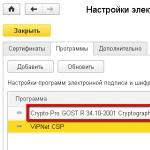Distribution doesn't work. We distributed Wi-Fi from a laptop, but the Internet does not work “Without access to the Internet. The Internet does not work from the created access point on the laptop
Articles on setting up Wi-Fi distribution from laptops collect a lot of comments and questions. When the Internet is connected to the laptop, we launch Internet distribution via Wi-Fi in Windows and connect our devices to it: phones, tablets, and other laptops. Our laptop replaces Wi-Fi router. You can start Wi-Fi distribution in Windows 7, Windows 8, and Windows 10. In Windows XP there is no such option.
I have already prepared instructions for setting up hotspot on Windows 10 (using the command line, or the Switch Virtual Router program) and in Windows 7. See these articles:
So, many people manage to launch Wi-Fi distribution without any problems. But, there are cases when, after setting up Wi-Fi distribution on a laptop, the network itself appears, devices connect to it, but the Internet does not work. On phones and tablets, pages simply do not open in the browser, and programs that require Internet access do not work. If you connect other computers to your laptop via Wi-Fi, then when such a problem appears in Windows, the Internet connection status will be “Without Internet access.” Or, to a limited extent, if you have Windows 8, or Windows 10.
The problem is clear: Wi-Fi network The laptop is distributed, devices are connected to it, but the Internet does not work, “No access to the Internet.” Now we will try to figure out why this problem may occur, and we will try to solve it. We will consider the case when it is possible to create a network, but there is no access to the Internet. There is simply another problem when the virtual Wi-Fi network on the laptop itself does not start at all, but this is a topic for another article.
Why does the Internet via Wi-Fi not work when distributing from a laptop?
Let's start with the most popular reason why the Internet, the distribution of which is configured in Windows, may not work.
1 We open general access to the Internet. In each article on setting up a hotspot, I wrote about a very important point - opening public access to the Internet for a running Wi-Fi network. It is precisely because of the public access settings that the Internet most often does not work. The created network appears, we connect to it without problems, but the connection through which the Internet is connected to your laptop does not allow you to use the Internet.
Therefore, in the properties of your Internet connection (most likely this is a normal connection via network cable, or via 3G/4G modem), we need to allow Internet sharing for the connection we created. The articles I linked to above contain this information. But, let's figure it out again how to open general access to the Internet. In both Windows 7 and Windows 10, this is done in approximately the same way. I'll show you using Windows 7 as an example.
Right-click on the Internet connection icon and select Network and Sharing Center.

Opening Change adapter settings.

Right-click on the adapter through which your laptop is connected to the Internet. Choose Properties.

Go to the Access tab, check the box next to "Allow other network users to use this computer's Internet connection" and select the network we created from the list. Most likely, it will have the name " Wireless network connection"with some number at the end. Click Ok.

After these steps, the Internet should work. If it doesn’t work, then try rebooting the laptop and starting Wi-Fi distribution again.
2 Disable antivirus and firewall. Antiviruses very often block the connection of your device to the laptop. In such cases, an error like “Failed to connect” appears, the IP address is being obtained all the time,” or the connection to Wi-Fi never ends.
But it may also happen that due to an antivirus or firewall installed on your laptop from which you distribute the Internet, there will be no access to the Internet. Therefore, you just need to try disabling the antivirus. For a while. You can only disable the built-in firewall. This is done differently on different antiviruses.
3 Check if other devices are working. It may be that the problem is not in the laptop that distributes the Internet, but in the device that you are trying to connect to the Internet. If possible, just take another device and connect it to the network you created. See if there is Internet access there.
If the problem appears when connecting a laptop with Windows 7 installed, you can also read the instructions for. If you have Windows 10 and the status is "Limited", then see.
4 Features of Internet connection. It is clear that in order to distribute the Internet from a laptop, it must be connected to the Internet. It is this connection that it distributes to your other devices. So, if there is no access to the Internet, then this may be due to the characteristics of your Internet connection. This can especially happen when connected via a 3G/4G modem.
I have no way to test the operation of a virtual Wi-Fi network with different Internet connections. Therefore, if you are unable to turn your laptop into a Wi-Fi router, then it may be due to your Internet connection.
6 Update: in the comments, Zhenya shared another solution that helped him fix the problem with the lack of Internet when distributing Wi-Fi from a computer.
On the “Access” tab, where we open shared access to the Internet connection, you need to click on the “Settings” button, and in the new window, check the box next to “DNS server”.

Click Ok and see the result. The Internet should appear on the devices you connected to the laptop. If not, then try restarting your computer and starting the distribution again.
7 Update: another tip from the comments. If your computer is home network, then try to get out of it. This should help, and your laptop will start distributing the Internet to other devices.
If you solved this problem in some other way, you can tell us about it in the comments, we will be grateful. Well, ask your questions, we will try to help!
8 Another solution that Mikhail shared in the comments, and this method has helped many people.
Go to the devices of your Internet connection (as I showed above in the article), and uncheck the box “Allow other network users to use...”. Click Ok. Next, open the properties of this connection again, check the box next to “Allow other network users to use...” and select our connection from the list (wireless network connection with a number at the end). Click Ok. The Internet on devices should work.
 This is a fairly common question. Owners of laptops or desktop PCs that support Wi-Fi with wired Internet have the opportunity not to buy a router, but to distribute Internet for their smartphones or tablets. This trick is not stable or convenient, but it can always come in handy.
This is a fairly common question. Owners of laptops or desktop PCs that support Wi-Fi with wired Internet have the opportunity not to buy a router, but to distribute Internet for their smartphones or tablets. This trick is not stable or convenient, but it can always come in handy.
Naturally, the simplest solution is to purchase a router, which will save a lot of time and effort. Only situations are different, and distribution from a computer can sometimes help out. Setting up such a distribution itself is not difficult, but sometimes a problem may arise, which is common. If a Wi-Fi network has already been created, then the mobile device can connect to it, but the Internet itself cannot be used.
What is the problem?
There are quite a lot on the net open topics with a similar question. The symptom is the same almost everywhere. The network is visible, gadgets connect to it, but websites cannot load and client applications also do not go online.
We will generally resolve the issue. The laptop itself cannot provide network access to the configured access point. There are two cases when this occurs. First of all, the connection is blocked using anti-virus software, a firewall is activated on the computer, or access to the Internet is simply closed, which can be seen in the distribution connection settings.
How to make Wi-Fi distribution available?
In most cases, you should turn off the firewall or running antivirus application. The only thing is that when setting up a connection with a USB modem, there may be some nuances that can be resolved by searching on the network, but for most computers this may be the only solution.
The second case is closed public access. If an antivirus is not installed on your computer and the firewall is turned off, you should do the following.
To begin, right-click on the connection status icon and select “Network Center”. Next, you need to select “Change adapter settings”, right-click on Connection by local network and open the Properties window. There is the “Access” tab, after opening which you can see two options for permission to access the network. They need to be enabled and the changes saved.
Additional questions
You may also be asked to completely disable the antivirus. The option of deleting it should not be considered, since any such application has the function of disabling protection for a while. For example, if Dr.Web is installed, you can click on its icon on the taskbar and select Firewall - Disable.
Other antiviruses are turned off in a similar way.
At the same time, working with the Internet without enabled protection is also not an option. To resolve this issue, you should open the firewall settings and make the connection you created an exception.
Well, a very, very popular problem. If you have a laptop (or a computer with a Wi-Fi adapter), and wired Internet is connected to it, you can save on buying a router and distribute the Internet from your laptop to your mobile devices. This is not very convenient, and it doesn’t always work, but it is possible.
I, of course, would advise buying a Wi-Fi router and not bothering your computer with Hotspot setup. But, there are different cases, and very often, the ability to distribute the Internet from a laptop is a great help. There is nothing difficult in setting up the access point itself, but there is one problem that is very popular. When, during setup, you try to connect to the Wi-Fi network created on the laptop, the device connects, but the Internet does not work.
On our website, on this moment there are three detailed instructions for setting up Wi-Fi HotSpot. You can check them out:
You can look at the comments for each article. There they almost always ask only one thing: the Wi-Fi network appears, phones, tablets, laptops, etc. will successfully connect to it, but when you try to access the Internet, nothing works. Websites do not open, programs that use the Internet also do not work.
The problem is understandable in principle, it’s just that the laptop does not have access to the Internet. More precisely, it is there, but it does not go to the created access point. And the two most popular reasons are: the connection is blocked by an antivirus or firewall, or general access to the Internet is not open, in the properties of the connection from which you are distributing Wi-Fi.
The Internet does not work from the created access point on the laptop
Most often, I advise you to disable the antivirus, or firewall if it is installed. And it helps. There may be nuances only when setting up via a USB modem, but, as a rule, disabling the antivirus helps, and the Internet starts working on all connected devices.
Also, check the sharing of your connection. I wrote about this in every article, links to which are above. And I wrote about antiviruses in every article. But who reads these articles 🙂 but the comments are full of the same questions. They will now simply provide a link to this article.
So, if you have the same problems as I described above, then first of all turn off your antivirus and other programs that can block Internet connections. Well, check your sharing settings.
The question often arises, how to completely disable the antivirus? Delete? No, every antivirus has the ability to temporarily suspend protection. For example, in Dr.Web this is done like this:
 As you can see, it is enough to disable the built-in firewall to check if this is the problem. If everything works after disconnecting, then the connection was blocked by the antivirus.
As you can see, it is enough to disable the built-in firewall to check if this is the problem. If everything works after disconnecting, then the connection was blocked by the antivirus.
Kaspersky is disabled like this:
 If you have another antivirus, then just type in the search “how to disable such and such an antivirus”, everything is there.
If you have another antivirus, then just type in the search “how to disable such and such an antivirus”, everything is there.
Let's say you disabled the antivirus and everything worked. What now, use a computer without an antivirus? No, you just need to add the connection to exceptions in your antivirus settings. So that the built-in firewall does not block it.
Look for your firewall settings, there you can unblock the desired connection.
If disabling the antivirus and other programs does not help, and checking the sharing settings also did not help, then write in the comments, describe the problem in detail and I will try to help you. If you know any solutions, or may have already encountered this problem, you can share it in the comments. I will be grateful!
We have already talked about the MyPublicWiFi program - this popular tool is actively used by users to create a virtual access point, allowing them to distribute the Internet via Wi-Fi from their laptop. However, the desire to distribute the Internet may not always be crowned with success if the program refuses to work.
Today we will look at the main reasons why the MyPublicWiFi program does not work, which users encounter when starting or setting up the program.
The MyPublicWiFi program must be granted administrator rights, otherwise the program simply will not start.
To grant a program administrator rights, right-click the program shortcut on your desktop and select the item in the context menu that appears. "Run as administrator" .

If you are an account holder without access to administrator rights, then in the next window you will be required to enter the password for the administrator account.
Reason 2: Wi-Fi adapter is disabled
A slightly different situation: the program starts, but refuses to establish a connection. This may indicate that the Wi-Fi adapter is disabled on your computer.
As a rule, laptops have a special button (or key combination) that is responsible for turning on/off the Wi-Fi adapter. As a rule, the keyboard shortcut is often used on laptops Fn+F2 , but in your case it may be different. Using the keyboard shortcut, activate the work Wi-Fi adapter.

Also in Windows 10 you can activate the Wi-Fi adapter through the interface operating system. To do this, call the window "Notification Center" hotkey combination Win+A, and then make sure that the icon wireless network active, i.e. highlighted in color. If necessary, click on the icon to activate it. In addition, in the same window, make sure that you have disabled the "In airplane" .

Reason 3: the program is blocked by antivirus
Because Since the MyPublicWiFi program makes changes to the operation of the network, there is a possibility that your antivirus may mistake this program for a virus threat, blocking its activity.
To check this, temporarily disable your antivirus and check the functionality of MyPublicWiFi. If the program works successfully, you will need to go to the antivirus settings and add MyPublicWiFi to the list of exceptions so that in the future the antivirus will no longer pay attention to this program.
Reason 4: Internet distribution is disabled
Quite often, users, having launched the program, find a wireless point and successfully connect to it, but MyPublicWiFi does not distribute the Internet.
This may be due to the fact that the function allowing Internet distribution is disabled in the program settings.
To check this, launch the MyPublicWiFi interface and go to the Settings tab. Make sure you have a checkmark next to "Enable Internet Sharing" . If necessary, make the required change, and try to distribute the Internet again.

The latest versions of the Windows 10 operating system provide a Mobile Hotspot option. This is a special function that allows you to configure the distribution of the Internet from one device to another via wireless Wi-Fi technology. But many users are increasingly complaining about unstable operation of the hotspot, errors in access point settings, etc. And all these problems arose after the release of subsequent updated versions of the “ten”. That's when this option first appeared. The pre-installed hotspot did not work on its own, but it also canceled other methods of setting up and distributing the Internet. For example, in some updated versions it was impossible to configure distribution using the traditional method - using the cmd.exe service.
Users for whom the method worked before the new feature appeared began to complain about many problems.
Common problems with the Mobile Hotspot feature:
- Access point configured using the system option does not find a connected and stable network. Settings cannot be made if the device is connected via Ethernet (connection to high speed). Or the settings are correct, but the number with password and login cannot be dialed. You did the right thing, but in the new function window you see an error notification. However, it states that there is no connection via wireless, Wi-Fi, network, high-speed Internet technology or mobile Internet.
- You have configured your wireless router using an access point or cmd.exe service, but when you try to connect a smartphone, tablet, etc. gives startup error. The error may appear quickly or after a long time. The device cannot connect to the network distributor (desktop computer or laptop): it cannot obtain an address or pass authorization. And after lengthy attempts it returns a connection error.
- You configured it correctly, were able to launch the base station via the command line or hot spot, and even connected your smartphone wirelessly. But when you try to access any resource, it appears notification about not connected network.
- The system was updated automatically or you downloaded the new version yourself and were faced with the fact that your device stopped distributing the Internet. And it is impossible to reconnect as before, via the command line. The network hosted on this computer/laptop will not start. The operation cannot be performed due to a device mismatch (it is not in the required state).
- It is not possible to configure a hot spot if your connection uses when connecting 3G/4G modem via USB protocol.
These are the main errors you may encounter in new version Win 10, when trying to set up an access point, the mobile hot spot function preinstalled in the system turns on. To date, there is still no really existing option that could correct all of the above problems. But there are separate solutions that are applicable to the situation with setting up an access point and distributing Wi-Fi Internet to one or more devices.
Mobile hotspot Doesn't turn on with high speed connection(dialer, PPPoE, VPN)
For an unknown reason, the Mobile Hotspot function does not work with a high-speed connection (to connect to the Internet, you must log in by entering your username and password). In this case, the laptop or computer is connected, the connection is stable, but when you try to distribute the Internet, a notification appears that no connection via wireless, Wi-Fi, data network high speed internet. Based on this, the conclusion suggests itself: new feature operating system from Microsoft latest version It has connection problems network protocol PPPoE, since the Ethernet adapter is not involved and assigns this connection to an unidentified network.
- The message looks like this:

Microsoft system developers do not directly observe the problem, and provide standard solutions to countless questions. Or rather, most likely, the problem is clear, but it’s just not possible to solve it yet. In our opinion, it's all about the network adapter. When you try to connect via a mobile hotspot, it is not recognized by the function preinstalled in the system. And if so, then the issue of its visibility should be addressed directly by the operating system programmers. And, therefore, there cannot be ready-made, real options using this distribution function. Most likely, the function will be fixed in the next OS updates. But you can always find a way out, and we offer the following:
Solution: Try setting up a network access point using the command line (cmd.exe), more on that in the article. If the commands do not help, you can resort to other options. Below we will talk about possible solutions when the cmd.exe service does not start the access point.
There are also software launch options. You can use one of the most reliable and effective utilities (for example, the program) and try using it to distribute the Internet on the latest version of “tens”.
Devices connect, but the Internet works when you enable Wi-Fi sharing mode in Windows 10
This is a very common problem that any user can encounter, but it most often happens when connecting through the command line, while the Mobile Hotspot feature handles all the settings automatically. If your device is connected to the created access point, but the network is not working, then perhaps it’s all about sharing. Look at the settings and restart the Internet, more on this in the article.
If you still cannot find a solution, perhaps the options below will help you.
Distribution mode is enabled, but devices do not connect (no Internet)
If, with a correctly configured access point, there is no connection to other devices (long authorization, obtaining an address and other problems). A large number of users face this problem, but there is no single solution. We will describe probable and working solutions in more detail in the next article.
In this case, you can try disabling blocking antivirus programs, turning off the firewall (set neutral parameters) or checking the IP address settings by setting the automatic mode.
Wi-Fi access point cannot be configured in Windows 10 after update
And this error affected large quantity users. However, both the mobile hotspot and the activation of distribution via the command line over a wireless network do not work. Even those who easily distributed the Internet via the command line before the advent of the pre-installed mobile hot spot function encountered it. When you try to execute a command, the service notifies you of the following problem: the operation cannot be performed due to a mismatch of hardware and device settings.

This can mean one thing: the wireless adapter does not have drivers or the versions installed on the device are outdated. We described this in detail in the article. Reinstall the drivers, remove them and download them from the official resource, and be sure to restart your computer.
If you have not yet used one of the connection methods, then try another (in the article)
Distribution cannot be configured when connecting to the Internet via a 3G/4G modem
If your laptop/computer is connected using a modem via USB technology ( mobile operators) using the programs provided with this equipment, then most likely you will encounter errors when turning on the distribution. The Mobile Hotspot function most likely will not see this modem and this connection. But this problem can be solved.
Solution
Internet through this modem can be started and using software methods the Windows 10 system itself, using only the driver included (when connecting the modem to the computer, use Windows’ offer to install drivers from the specified location). At the same time, clicking on the icon network connections, the tab “ Cellular«.

All unnecessary programs must be removed (or exited from them). The mobile hotspot must see such a connection.
With this connection, distribution through the Mobile Hotspot should work.
Other solutions
We offer you three more options when all of the above does not work.
- Option one. Launch the command line as PC Administrator. You can open it by right-clicking on the menu icon “ Start" and selecting " Command Line (Administrator)«.

- In the open window, enter the commands one by one (below) and press the button “ Enter».
netsh winsock reset
netsh int ip reset
ipconfig /release
ipconfig /renew
ipconfig /flushdns

- After you do this, you must restart your computer.
Option two. Download the Wi-Fi adapter driver from the official website of your laptop manufacturer, or if you have a removable Wi-Fi adapter installed, then from the website of this developer. After which you need to launch it. Next, uninstall the wireless adapter driver through the " Device Manager" In chapter " Network adapters" You can do this by right-clicking on the device (named “Wireless” or “Wi-Fi”) and selecting “ Delete«.

- Restart your PC. After the driver on wireless Internet should install automatically.
Option three. Reconnect the Internet (reset network settings). If it is impossible to connect to the main device via Wi-Fi (no matter what method you set up access), you can try this option. Just remember that all connection options will be deleted, and the adapters will be configured as standard.
Attention: after performing the network reset procedure, the parameters of existing networks will be erased to the initial state of the computer. You will need to re-enter your login information.
- To do this, you need to go to " Options"PC and in the section " Network and Internet t" find the tab " State". It is here that you can return to your previous Internet settings by clicking on “ Network reset«.

- The system will require you to confirm your action with the “ Reset now«.

After rebooting the device, configure the distribution again, first making sure that the Internet connection is active. If the network does not work after a reboot, configure it using the system's software methods. We hope everything worked out for you.






